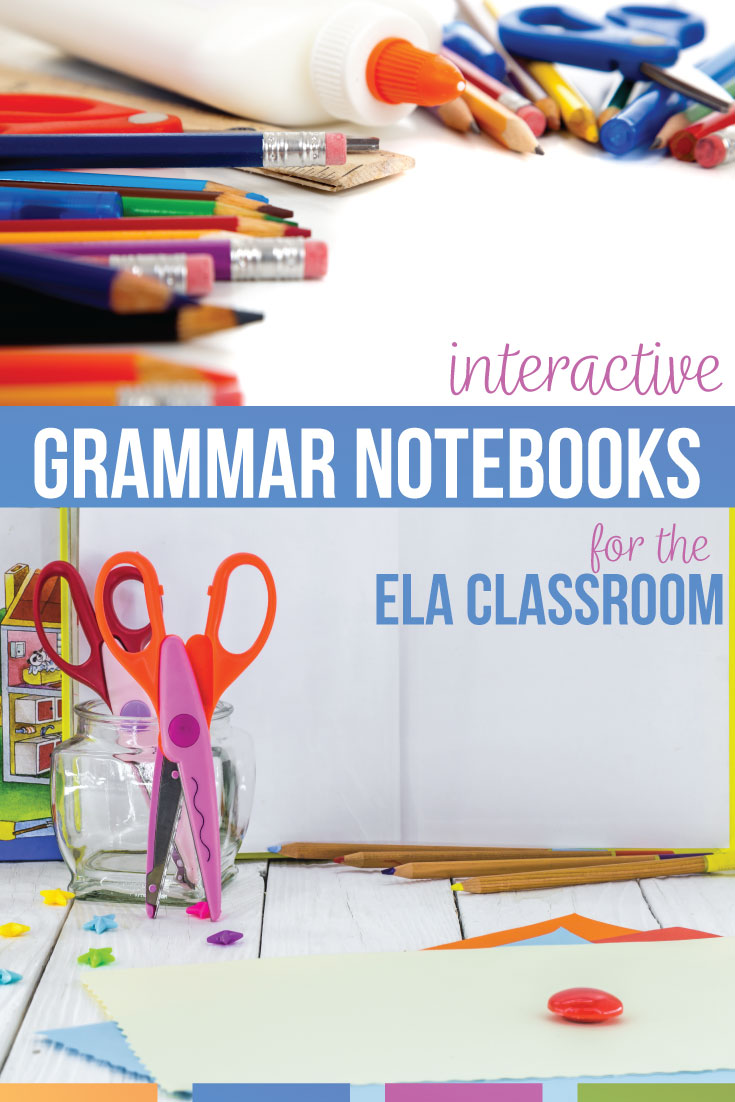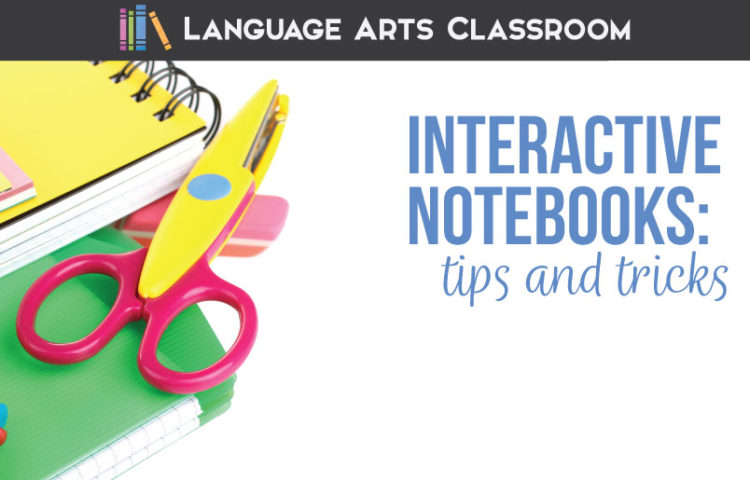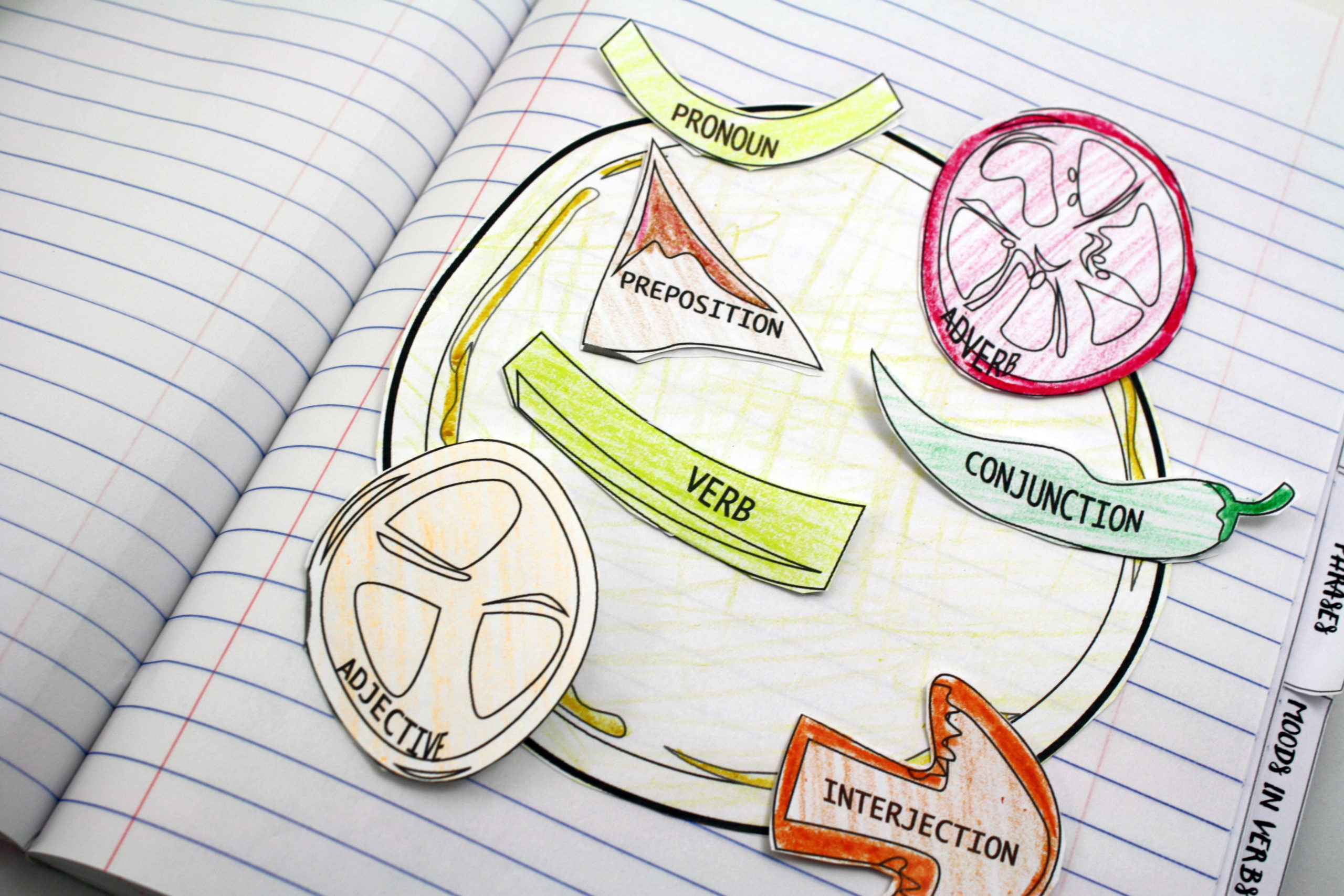Do you use interactive notebooks for grammar lessons? I had luck with middle school students and interactive notebooks.
When I heard about interactive notebooks a few years ago, I immediately thought, fad. I dismissed them as the latest, in a long line of concepts in education that will change students! but disappear after a few years.
Wrong! Not only have I used interactive notebooks with my students, but I have also used them with my own children. Grammar can come alive with interactive notebooks, and as someone who loves to teach grammar, I want to reach as many students as possible.
The versatility never ends: color-coding pages, using tabs, creating a table of contents. Not only do students understand the concepts, but they also learn important soft skills. Students enjoy the hands-on grammar pieces and because they spend so much time on their notebooks, they become invested in the process.
Can interactive notebooks for grammar be manageable?
As I use these versatile tools, teachers ask me questions about them. As I experiment and create and learn, I have developed these tips for using interactive notebooks. Below, I outlined ideas to make interactive notebooks for grammar (and writing!) useful.

Start small.
My largest mistake with interactive notebooks was expecting perfection and a wonderful notebook immediately. I backed up (I probably overwhelmed my students), and began with a basic interactive notebook. When I allowed students to experience success with interactive pieces, they invested themselves more as we created more pages.
Now, we used the small pieces to organize, and we also made lists and examples to accompany those pieces. NOT every page was full of beautiful coloring.
Starting with small definitions and an overview of grammar terms, I found what worked for my classes. We use glue sticks, not liquid glue. I cut large chunks of paper off the edges of printed pieces so that I am giving students trimmed down pieces. I provide direct instruction as students then manipulate their pieces.
If you would like to experiment with a few pieces, download my free grammar and writing interactive notebook pieces:
Add grammar instruction.
In education, the pendulum swings. For years, different learning styles was the key, which meant that any process that bordered on direct instruction was considered wrong.
And? Plenty of grammar lessons can include grammar puzzles, sorts, coloring sheets, and manipulatives. However, nothing is wrong with explaining a grammar concept through direct instruction.
Let’s take a specific grammar concept like verbal phrases. Verbals have definitions and various grammar rules (comma use, misplaced and dangling modifiers) surrounding them. Providing definitions and sentence examples might be considered direct instruction, but before you work with different types of grammar resources, explain the facts first.
A strong grasp of grammar helps with intricate sentences as students move up grade levels. Take a set of words and use them in different ways, personalized for your sentences.
Direct instruction can be more than regular quizzes or a 45-minute lecture. Plenty of concepts (like irregular verbs) need direct instruction.
Do what a worksheet cannot.
A worksheet can be the perfect tool for clarifying concepts. A grammar worksheet is straightforward and when students are confused, a no-nonsense sheet might help more than an interactive activity would. Worksheets help students, but interactive notebooks can provide students with visuals that a worksheet cannot. My favorite? Blocks.
Grammar is the building blocks of language. Provide this grammar metaphor for students. You are providing the foundation of grammar lessons with basic definitions. Together, you are understanding the language that students should be able to manipulate in their writing and speaking. (They should also understand that speakers and writers will try to manipulate them!)
I also create varying visually appealing interactive pieces for the notebook because grammar can be fun. Once students understand grammar on a deeper level, like with a metaphor, they will remember the terms. As you continue, you’ll find that students will create their own metaphors. If you see the eight parts of speech as a pizza, students might see them as a salad. Allowing students to doodle and add their own ideas will enrich the notebooks.
Basically, use a variety of activities with grammar, just as you would with any other part of class.
Use age-appropriate materials.
I do teach in a state that uses the Common Core. While I understand that grade leveled standards are complex, I base my activities off what I am expected to teach. For instance, when I use interactive notebooks for fifth and sixth grades, I review parts of speech and parts of a sentence with students, and then we work on choosing types of conjunctions. My parts of speech interactive notebook pieces allow students to use both sides for definitions, examples, and lists.
I don’t use the same interactive grammar notebook for older students that I use with younger students. For seventh and eighth grades, we review verbal phrases and clauses, and then we work on punctuating them correctly. My upper-middle school students use their grammar interactive notebook to take notes and to study.
Standards might dictate that seventh graders (for instance) should work on sentence structure. We can meet that standard, but we might first need to review subjects and verbs. Scaffolding the process is often necessary. An interactive grammar notebook can be a great way to scaffold for the whole class.
Finally, capitalize on narrative writing as a study of the rules. Creative writing skills allow for rich discussions surrounding “correct sentences.” With dialogue, for instance, do we always need complete sentences? Interactive notebooks are a resource type where you can personalize the pages. A great activity is to have students practice writing directly in their notebooks.
Model.
Additionally, I modeled what I wanted students to create. I simply bought a notebook and build the pieces as students did. You might be planning to do that, but the first time I implemented interactive notebooks, I did not! (Duh!)
So! Create your own notebook and glue, cut, and draw along with your students. Plus, my notebook serves as a useful tool for absent students. In future years, I use the notebooks to introduce expectations.
Also, talk through a multitude of elements with the notebook as a guide for key grammatical concepts. For instance, if are applying grammar skills to writing, model applying punctuation rules to writing. Our given time limit during the school year requires that we connect those pieces.
Final thoughts on interactive notebooks for grammar.
If you are thinking about using interactive notebooks, I suggest implementing them. Start with small pieces and work alongside your students.
Remember to bring the notebooks out for lessons, and ask students to consult them. If you teach a concept (like dependent clauses), reinforce the corresponding grammar rule (commas with introductory dependent clauses) with your notebook.
Middler school grammar requires balance: Those students still enjoy fun activities, but they disdain babyish tools. Be sure your interactive pieces and visual diagrams look mature.
Grammar is a tough subject to teach—students too often come with preconceived hatred. Changing their opinions and making grammar part of life, an interesting subject, can be done! Sometimes it takes a bit of inspiration, and interactive notebooks do just that. Start small, think of what visuals will help your students, and use age-appropriate tools.
Interactive notebooks for grammar can be part of a comprehensive collection of grammar resources.
Are you interested in using mentor sentences with interactive notebooks? I’ve experimented with mentor sentences as well!
And! Please leave a comment below with extra questions that I missed in this post. What successes have you found with interactive notebooks?



